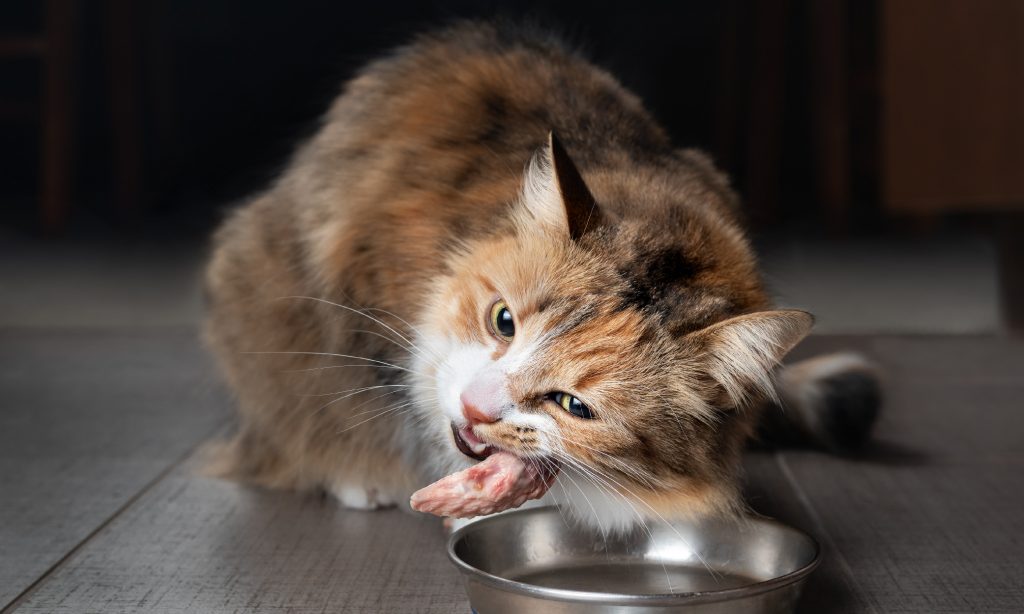Our beloved pets bring immeasurable joy and companionship into our lives, becoming cherished members of our families. While we shower them with love and care, one aspect of their well-being is often overlooked, their dental health. Just like humans, pets require regular attention to maintain a healthy mouth, as dental issues can significantly impact their overall wellness. The bacteria and plaque harden on their teeth to create tartar. This results in receding gums, gingivitis, pain, and tooth loss. When left untreated these dental infections can spread to the heart, kidneys, and other vital organs of our loved ones.
By understanding and implementing the following practices, we can ensure our furry friends not only flaunt a bright smile but also enjoy a life of vitality and happiness. So, let’s delve into the world of pet dental care and discover how simple steps can lead to a lifetime of optimal health for our four-legged companions!
Regular Brushing
Regular brushing is a cornerstone of maintaining optimal oral health in pets, playing a pivotal role in preventing the accumulation of plaque and tartar. Many may feel it is outdated, but veterinarians stand by it; brushing is the best way to prevent tartar build up and gum disease. By establishing a routine of brushing your pet’s teeth, we can effectively remove the plaque before it solidifies into tartar, minimizing the risk of dental issues. We all know it is not as easy as it sounds, but this practice can play a vital role not only in their dental health but also their overall well-being.
Choosing the right toothbrush and toothpaste is essential to make the brushing experience as comfortable and effective as possible, for both us and our pets. We are in this together! There are a pet-specific toothbrushes with a variety of sizes so we can find the appropriate size for each furry friend. Some may be more comfortable with a handle while others prefer the finger toothbrush. Additionally, there are pet friendly toothpastes and gels in a variety of flavours like peanut butter, chicken and bacon that can make the experience more enjoyable for our four-legged companions. We do want to stay away from human toothpaste and avoid any products that contain xylitol, which is toxic to our pets. Introducing our pets to brushing requires patience and a gradual approach. We want to begin by allowing them to sniff and lick the toothbrush and toothpaste to help them get familiar. Progress into gentle touches around the mouth, slowly incorporating short brushing sessions until they become accustomed to the process. This can take a few days or weeks and positive reinforcement with treats and/or praise can go a long way in making the process as positive as possible.
Dental-Friendly Diets
The impact of diet on oral health in pets can be profound; it is not just about providing them nutrients, but also about ensuring their pearly whites stay gleaming. Luckily, there are a few options out there to suit everyone. Opting for a kibble that is designed to promote dental health can do wonders. These specialized diets often boast big kibble pieces and rough textures that encourage chewing and help scrub away plaque and tartar in the process.
On the flip side, avoiding sugary foods and treats is crucial in avoiding dental dilemmas. Sugars can be villains in our pets’ dental health adventure, promoting growth of harmful bacteria wreaking havoc on their mouths. As these bacteria feast on sugars, they produce acids that, over time, can erode tooth enamel and create a breeding ground for plaque and tartar. This is where fresh, cooked, or raw diets come in handy. They contain more natural enzymes that help to control the bacterial growth and are low in carbohydrates that feed the pesky plaque forming bacteria. When it comes to our pet’s meals, we want to make choices that not only satisfy their taste buds but also contribute to a great dental regime.
Dental Chews & Toys

Dental chews and toys are not just your pet’s playtime buddies; they’re the superheroes of oral hygiene, on a mission to keep their teeth clean and strong. The benefits of these dental delights extend far beyond a blissful, fulfilling chew session. As our furry friends enthusiastically gnaw on a dental chew or toy, they are not only satisfying their natural instinct to chew but also engaging in a full-scale battle against plaque and tartar. Whether it is a raw-meaty bone, challenging chew, or sturdy toy, selecting the right match for our pet’s size, chewing style, and preference is crucial. A chew that is too small may pose a choking hazard, while one that is too large can discourage our pets. When providing a bone or chew, we want to ensure it is larger than the length of their muzzle and if we are uncertain or between sizes, it is best to go larger. For more voracious chewers, opt for more durable options, while more delicate chewers may benefit from softer materials. So, when playtime rolls around, make it a dual-purpose affair by incorporating dental chews and toys into the mix. Your pet will thank you with a sparkling smile and wagging tail, ready for the next adventure.
Water Additives & Oral Gels
In a world where dental care for pets meets convenience, water additives and oral gels emerge as the unsung heroes, offering a brush-free approach to maintain those sparkling smiles. Dental water additives, a.k.a. the magic elixirs for oral health, are designed to mix seamlessly with your pet’s drinking water. As they take their sips, these additives work behind the scenes, helping to break down plaque and fight off pesky bacteria. Many are made to be completely, tasteless, scentless, and invisible, so you can add it in, and they will never know.
Now we will jump into the world of oral gels. Just a few drops a day will result in a gorgeous smile by harnessing the power of the carefully formulated ingredients. These gels are often enriched with antimicrobial agents and enzymes that target and reduce harmful bacteria, plaque, and tartar buildup. The drops are applied to the gum line and take affect while our pets lick it and spread it around their mouth. These gels are crafted to freshen breath and promote optimal gum health, leaving your pet with fresh breath instead of stinky kisses.
Monitoring Signs of Dental Issues
Embarking on the journey of monitoring your furry friend’s dental well-being is like being a paw-some detective on a mission to crack the case of the bad breath. Start by keeping a keen eye on their eating habits and chewing antics; could be clues pointing towards potential dental issues. Is our once voracious eater suddenly approaching meals with hesitation? Or our enthusiastic chewing sessions have turned lackluster? These are the clues for dental concerns that warrant our attention. Ideally, experts recommend checking our pet’s oral health every day, but for some this can be unrealistic. If we can aim for a few times a week or weekly, it can be beneficial. Recognizing the tale-tell signs of dental problems is a lot more than just catching a whiff of bad breath. We want to watch out for subtle cues like swollen gums, excessive drooling, or even reluctance to chew and play with their toys. When we do stumble on these hints, it is time to take prompt action and speak with our pet’s veterinary team.
Regular Veterinary Check-Ups
Picture these check-ups as your furry friend’s personal spa day, the professionals dive into the task of keeping our pets healthy and their chompers in tip-top shape. These physical exams give our veterinarians the chance to look at their oral cavity; they are crucial line of defense against potential dental dramas. They can spot dental concerns that may elude even the most vigilant pet parent during at-home checks. These check-ups not only provide the opportunity for examination but also to talk about pet parent concerns, preventative measures, and professional cleanings. The frequency of these check-ups can vary based on age, breed, and overall health. Our veterinary check-ups play a pivotal role in addressing dental issues at their earliest stages. Early detection allows for prompt intervention, preventing the escalation of dental problems that could lead to discomfort, pain, or more extensive treatments. Together, with a vigilant eye and the guidance of your pet’s trusty vet, you’ll be well on your way to securing a lifetime of gleaming smiles and tail-wagging happiness!
Pet dental health is a vital aspect of overall well-being, often overlooked but crucial for a happy and healthy furry friend. We’ve explored simple yet effective tips – from regular brushing to dental chews and professional check-ups – all contributing to a brighter smile and a better quality of life for our pets. The benefits extend far beyond immediate oral hygiene; they pave the way for a future where our pet enjoys lasting comfort and joy. So, let’s embark on this journey of proactive dental care, ensuring our pets not only flaunt radiant smiles but also live their happiest, healthiest lives by our sides.
For tips on our smaller critters’ oral health, please follow the link below. https://globalpetfoods.com/dental-care-for-our-smaller-critters/
Written By
Taylor Luther
Marketing Lead, Customer Engagement
Taylor completed a Bachelor’s Degree in Animal Biology at the University of Guelph and has built up experience within the pet nutrition industry and the animal medical field. She has a passion to share all insights on pet nutrition and health for all of our furry (feathery, scaly or otherwise) friends.












